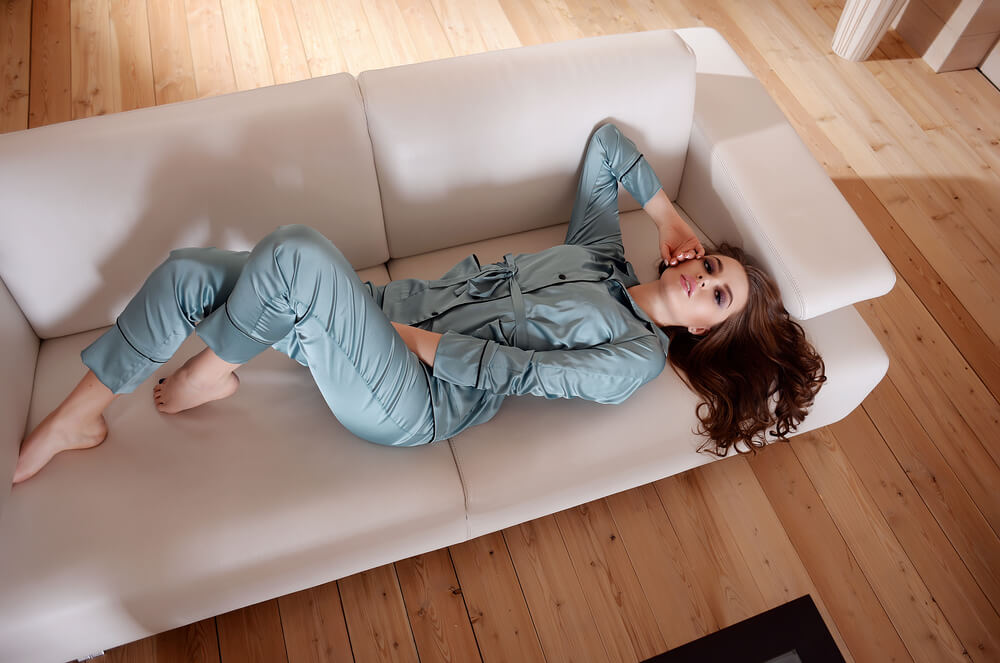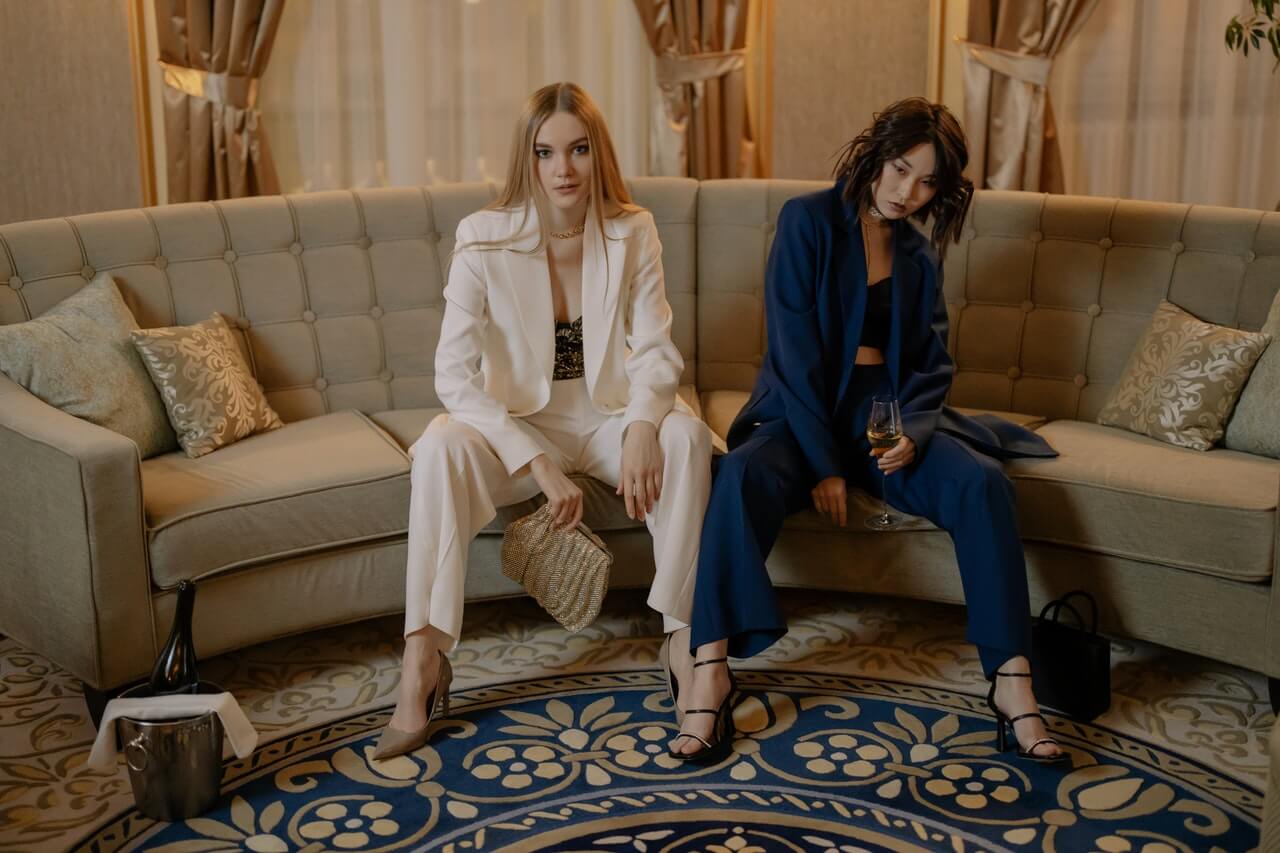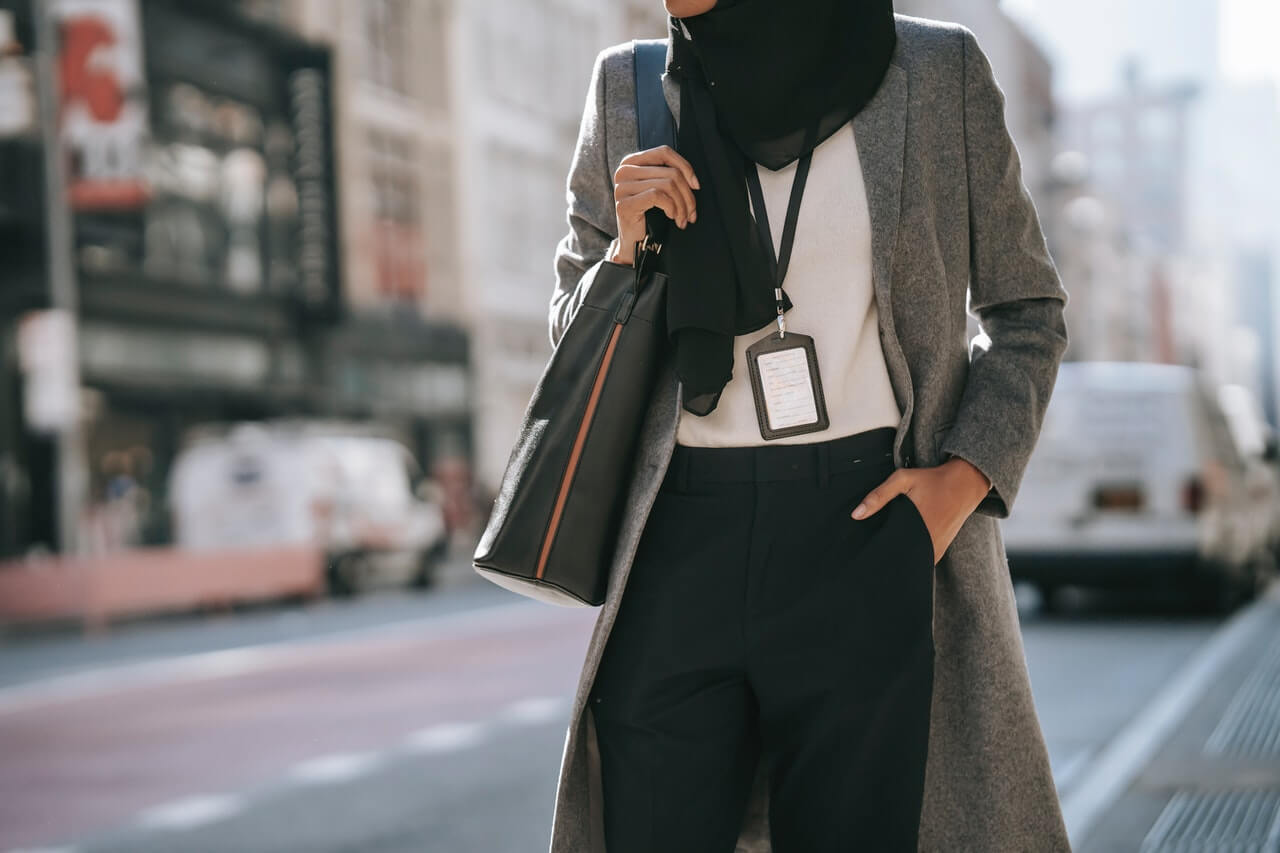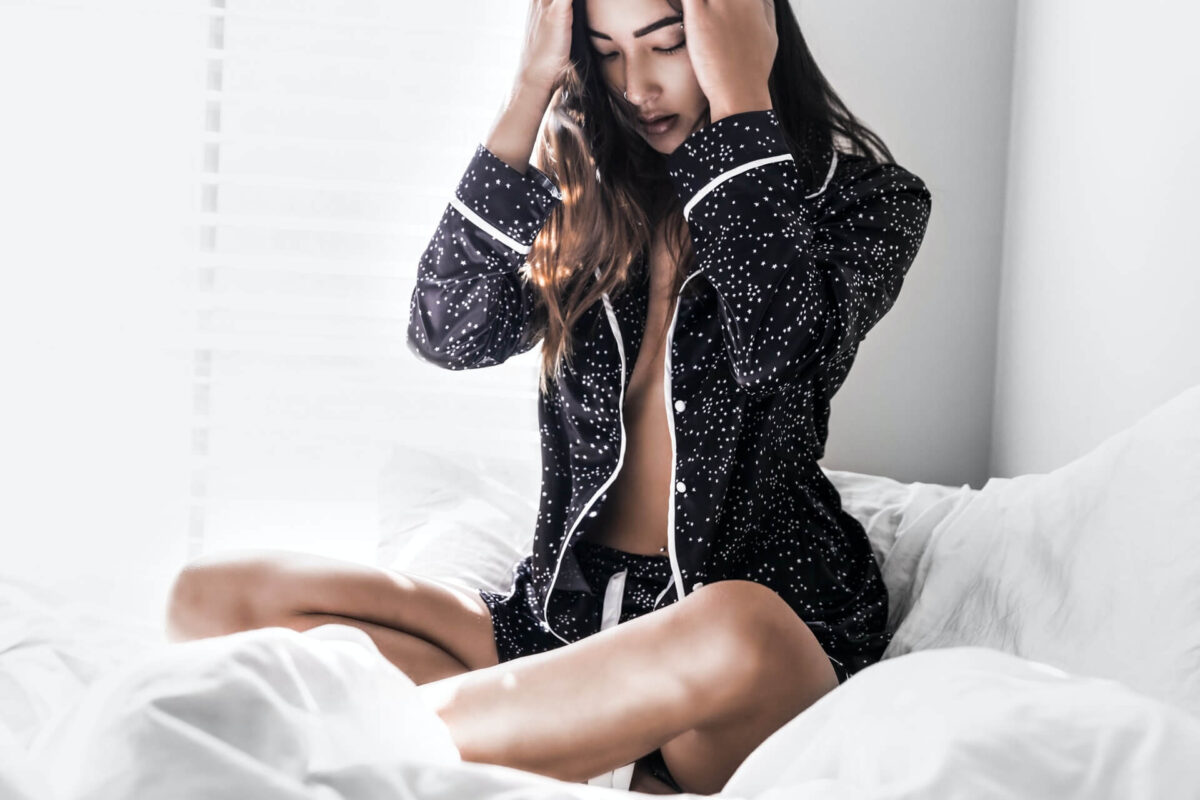
The Gothic style in clothing, architecture, painting and other directions appeared in the 12th century. During this period, people began to abandon the joys of life, highlighting asceticism - in clothes, accessories, the environment.  Men and women began to whiten their faces, making them lifeless. Clothes were worn exclusively black to reflect the ghost to all that is worldly, joyful. The Gothic style existed for a long time, but was forgotten when the Baroque style appeared - this happened in the 17-18th century.
Men and women began to whiten their faces, making them lifeless. Clothes were worn exclusively black to reflect the ghost to all that is worldly, joyful. The Gothic style existed for a long time, but was forgotten when the Baroque style appeared - this happened in the 17-18th century.
The second wind of the Gothic style in clothing received only in the 70s of the 20th century, but if in the years of the origin of the Gothic was generally accepted and widespread, now it began to manifest itself only in narrow circles - the Goth subculture.  Against the backdrop of the fashion of the 70s, when bright colors became the basis of any stylish wardrobe, gloomy Goths looked especially frightening. Outrageous outfits, pale faces, frightening accessories - all this was perceived by society without much enthusiasm, which only the Goths liked - their main goal was protest and rebellion.
Against the backdrop of the fashion of the 70s, when bright colors became the basis of any stylish wardrobe, gloomy Goths looked especially frightening. Outrageous outfits, pale faces, frightening accessories - all this was perceived by society without much enthusiasm, which only the Goths liked - their main goal was protest and rebellion.
The modern Gothic style has become less "masquerade", but it cannot be called widespread and ubiquitous. But, in fairness, from time to time the world fashion houses and brands use elements of style in their collections, each time reminding that gothic has not disappeared anywhere – it is just waiting for the right moment to again excite others and contrast with a bright colorblock or a peculiar and colorful boho prints.  In different years of the 21st century, Gothic flashed in the collections of Givenchy, Versace, Gucci, Alexander McQueen and others.
In different years of the 21st century, Gothic flashed in the collections of Givenchy, Versace, Gucci, Alexander McQueen and others. 



The Gothic style in clothing has several specific directions and each of them has a unique set of features. Classical Gothic, the same one that appeared in the 12th century, which eventually became "overalls" for the Goths, necessarily adheres to the following rules:



Typical fabrics for the Gothic style are denim, velvet, silk, leather, lace.
The Gothic style is considered to be gloomy, creepy and frightening, although in its classification there are also very "cheerful" directions.
In total, there are more than a dozen varieties of the Gothic style, but the most common are:
In different classifications, there are also gypsy gothic, western gothic, corporate, tribal, fairies. These are narrower, more specific areas.
This is the same medieval classic of the Gothic style. In different sources, this direction can be called antique, Victorian or romantic Gothic. Medieval Gothic is characterized by sharp forms, a tightly tightened corset waist, teeth on clothes and long trains of dresses.  The colors of the medieval Gothic style are all the same gloomy, but often not black, but dark blue, burgundy.
The colors of the medieval Gothic style are all the same gloomy, but often not black, but dark blue, burgundy.
The term "cybergoth" appeared at the end of the last century and was launched by the British company Games Workshop, engaged in the release of games in the Dark Future series. Cyber-Gothic is following the basic canons of the classical Gothic style, but with a dilution of their share of cheerfulness, expressed in bright, neon colors.  Cybergotics are characterized by bright dreadlocks and extreme bright makeup.
Cybergotics are characterized by bright dreadlocks and extreme bright makeup.
A cross between cyber-Gothic and medieval Gothic style in clothing – steampunk. A mixture of classic Gothic with its dark, but more diverse shades with modern notes of futuristic dystopia.  This Gothic trend in clothing is distinguished by a love of accessories made of leather, brass and wood. The shape of the accessories is specific - often there are details of the industrial world - parts of machines, gears, welding glasses.
This Gothic trend in clothing is distinguished by a love of accessories made of leather, brass and wood. The shape of the accessories is specific - often there are details of the industrial world - parts of machines, gears, welding glasses.
Another result of a mixture of Gothic style, but this time with punk fashion. From the subculture of punks, punk gothic has adopted the freedom of self-expression - a gloomy black or dark burgundy here is safely diluted with bright T-shirts with rebellious prints or plaid shirts. 
J-Goth or Gothic Lolita is a Gothic style in Japanese fashion. Unlike all other trends, J-Goth looks more aristocratic style, with a hint of European fashion and a touch of infantilism. Gothic Lolita is characterized by lace and ruffles, ribbons, skirts, shoes with thick soles. Hair is long, always styled in the perfect hairstyle. 
Here the imitation of Dracula and other vampires known for history, cinema, painting comes to the fore. Stylistically, the vampire Gothic differs from the medieval slightly - more often it is expressed in accessories. 
If you do not adapt the Gothic style to modern trends, it will always remain shocking and specific. Most often, the Gothic style in its pure form is used for thematic parties and photo shoots. If you are attracted to the Gothic style, but you want to make the image more modern, try to dilute it with other directions - casual, street style or even business.
What to include in the wardrobe:












Complement the image and make it more rebellious will help shoes and accessories. Black boots with a rough sole with lacing, or high-heeled boots are best suited - it all depends on the situation and desire.  The choice of accessories is huge - from simple chains made of silver, to a choker made of leather with spikes and leather bracelets. For a more extravagant outfit, jewelry with Gothic symbolism is suitable - crosses, skulls or bats.
The choice of accessories is huge - from simple chains made of silver, to a choker made of leather with spikes and leather bracelets. For a more extravagant outfit, jewelry with Gothic symbolism is suitable - crosses, skulls or bats. 

 The handbag is black and small. Both models with hard walls and more relaxed options will do. Bags with additional decor - chains, skulls, and classic without finishing are acceptable.
The handbag is black and small. Both models with hard walls and more relaxed options will do. Bags with additional decor - chains, skulls, and classic without finishing are acceptable. 

Not every designer will decide to produce only Gothic things, so there are not many mono-brands of this direction. We have collected 5 manufacturers, in the catalog of which you are more likely to find things in a modern Gothic style.

@zadigetvoltaire

@rickowensonline

@yangli

@anndemeulemeester_official

@allsaints










